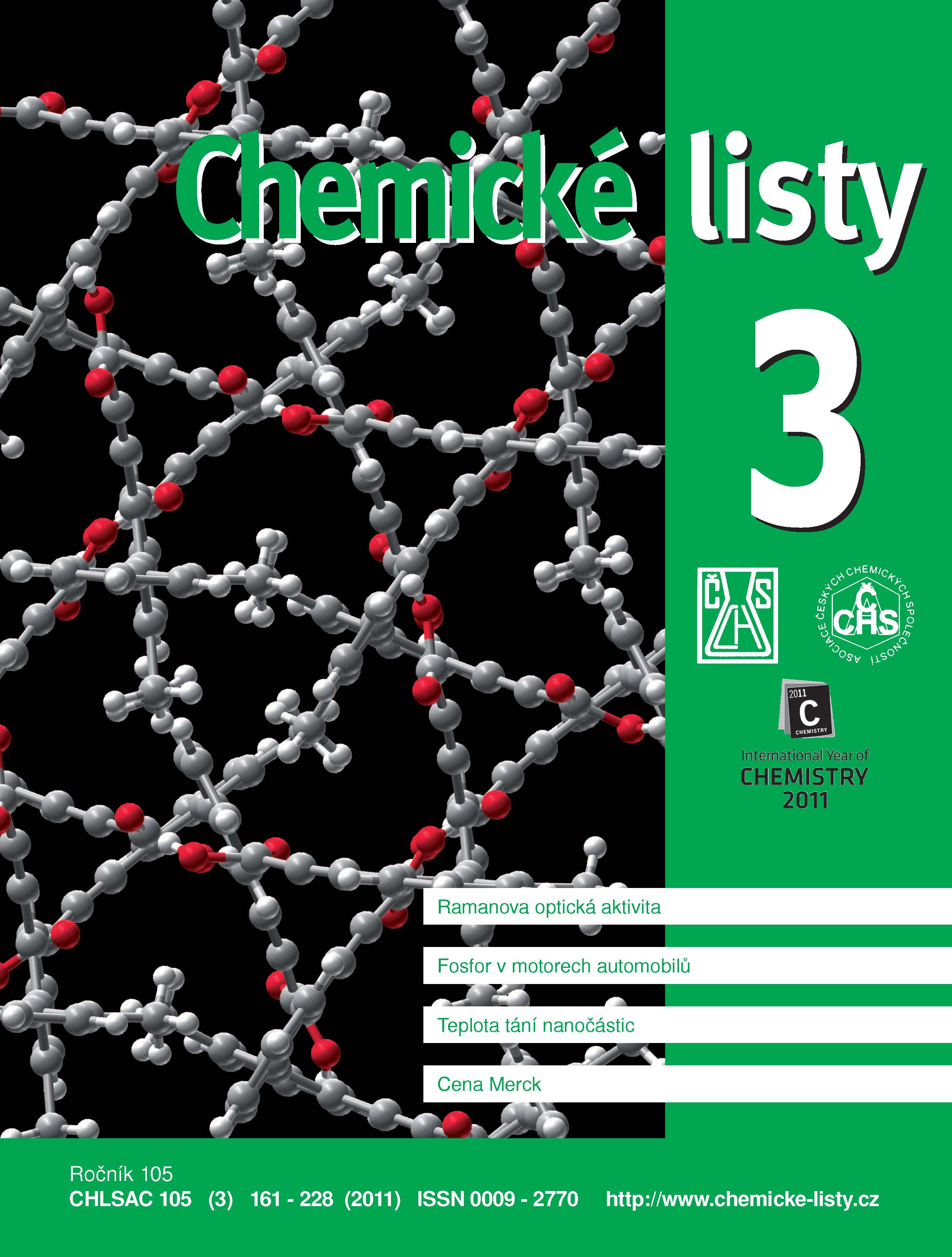Analýza nukleotidů v krevních skvrnách pomocí kapilární elektroforézy
Klíčová slova:
nukleotidy, krevní skvrna, kapilární elektroforéza, dědičné metabolické poruchyAbstrakt
Nucleotides play an important role in human metabolism and their disorders often result in severe health impairment. Separation of major cellular nucleotides from dry blood spots was achieved by capillary electrophoresis. On the basis of incubations of erythrocytes with nucleotides, possible applications of the method in screening tests are proposed. Deproteinated dry blood spot extracts were analysed in a silica capillary using UV detection. The separation buffer was a solution of citric acid and cetyltrimethylammonium bromide, its pH was adjusted to 4.3 with 4-aminobutanoic acid (GABA). The overall nucleotide profile of blood spot extracts is comparable with that of fresh blood, although their contents may slightly change during drying and long-term storage of the spots. The method offers reproducibility within 5 %, accuracy below 14 %, recovery of total adenine nucleotides 89.8±10.5 % and the limit of detection 1.2 mmol L-1 (R2 > 0.99) for uridine triphosphate and inosine monophosphate. Nucleotide profiles simulating disorders of purine metabolism were obtained by incubation of erythrocytes with nucleosides. The use of dry blood spots instead of fresh blood facilitates collection, transport and storage of blood samples and is patient-friendly. This method may be applicable to screening of inherited metabolic disorders.





